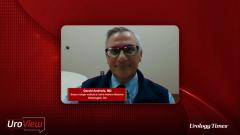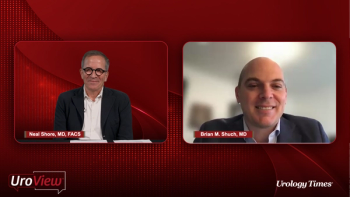
Unmet Needs and Future Directions in Risk Assessment For Prostate Cancer
Dr Andriole shares remaining unmet needs in prostate cancer risk assessment and shares his hopes for the future.
Episodes in this series

Dr. Gerald Andriole: I think that we need to compare biomarkers in a variety of different populations, so the biopsy naive population we talked about, the previous negative biopsy population; if we could add biomarkers to men who are undergoing active surveillance to again avoid unnecessary follow up biopsies or reduce the frequency of follow up biopsies, they may even reduce serial repeated MRIs in patients under active surveillance. That would be a really important benefit for our specialty and for our patients. So, there are those three things that we need to do, compare biomarkers in biopsy naïve, compare biomarkers in patients with a prior negative biopsy, and develop and compare biomarkers that are useful for patients undergoing active surveillance. Now the other thing I think we need to do, along with those things, is find an imaging modality that's better than MRI, better in the sense that it could be less expensive, better in the sense that it identifies more prostate cancer, better in the sense that it makes a subsequent targeted biopsy easier. Right now, we mentioned that MRI is not perfect, it might miss up to 25% of the significant cancers in certain populations, but it's expensive to do, patients don't like sitting in an MRI scanner, and the type of targeted biopsy relying on co-registration and software to enhance the urologist's ability to hit the most suspicious region within the prostate is not perfect, and it's far from perfect. So, an imaging modality that doesn't rely on so much post-image processing manipulation as we need now for MRI targeted biopsies would be terrific. And one of the things I'm keeping my eye on is micro-ultrasound, the new high megahertz ultrasound probes the image of the prostate at 29 megahertz compared to a 9- or 10-megahertz conventional ultrasound; shows us, I think in some cases, as many or more prostate cancers than MRI does, and because it's in real-time and under the direct control of the urologist, the biopsies are more accurate overall. So, I think those four things are where the urological community needs to spend its energy in the next few years to really characterize and fully exploit the benefits of biomarkers in prostate biopsy to detect prostate cancer.
Newsletter
Stay current with the latest urology news and practice-changing insights — sign up now for the essential updates every urologist needs.
















